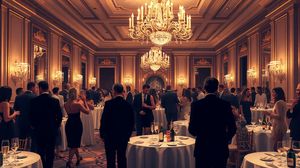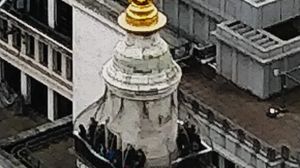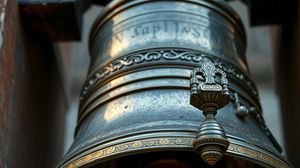
The Royal Exchange in London is a historic and iconic landmark that has been at the heart of the city's financial district since it was founded in the 16th century. Originally conceived by merchant Sir Thomas Gresham in 1565, it was designed as a centre for commerce, where merchants and traders could meet and conduct business. Over the centuries, the building has undergone several reconstructions, with the current structure having been opened by Queen Victoria in 1844.
One of the most interesting architectural features of the Royal Exchange is its stunning Greek-style neo-classical façade, which contains a pediment sculpture depicting Britannia with her maritime power, exemplifying the historical connections between London's economy and the sea trade. Inside, you'll find a grand courtyard that gives the space an open, airy feel, ideal for the variety of high-end shops and dining options now housed there.
The Royal Exchange has always been a site of immense historical importance. For example, the original building was used for stock trading until the formation of the London Stock Exchange. Despite two devastating fires in 1666 and 1838 which required extensive rebuilding, it has stood as a monument to London's resilience and ongoing commercial success.
An often-overlooked detail about the Royal Exchange is that it houses a luxury shopping destination. You might not expect to find an array of high-end retailers such as Fortnum & Mason and Tiffany & Co. within a site with such a storied past, but this juxtaposition of history and modernity is part of what makes it such an intriguing place to visit.
If you're a fan of literature, you might be intrigued to know that the site of the Royal Exchange is mentioned in several famous literary works, including those by William Shakespeare and Daniel Defoe. It has played host to merchants and financiers over the centuries, encapsulating stories and whispers that have possibly inspired these historical writers.

Making the Most of Your Visit:
If you're visiting the Royal Exchange, don't forget to look up! The interior's stunning dome and the intricate details of the ceilings are easy to miss if you're just focused on shopping. Spend a moment admiring the craftsmanship; it really adds to the grandeur of the place.
Pop in during lunchtime on a weekday. The Royal Exchange is located in the City, a bustling financial district, and you'll often catch the lively atmosphere as city workers are out and about. It's an excellent time for people-watching and soaking in the dynamic local business vibe.
For history buffs, take some time to explore the plaques and historical information dotted around the building. They provide fascinating insights into the rich and varied past of the Royal Exchange, offering context beyond its current luxury incarnation.
If you're interested in architecture, note that the Royal Exchange has two facing loggias. These aren't just decorative—historically, they've been used for a variety of functions, from civic ceremonies to financial dealings, providing an interesting glimpse into how public spaces have evolved in use over time.
Don't miss enjoying a coffee or a meal at one of the dining options inside the Royal Exchange. Imagine the centuries of commerce that have taken place on these grounds as you sip your drink—a uniquely charming blend of past and present.

Visiting Times & Costs:
The Royal Exchange, located in the heart of London's financial district, is open to the public and welcomes visitors.
Opening Hours:
- Monday to Friday: 7:00 AM to 11:00 PM
- Saturday & Sunday: 10:00 AM to 6:00 PM
Note that individual shops and dining venues within the Royal Exchange may have different opening times. It's recommended to check specific retailers if you are planning a visit to one in particular.
Entry Cost:
There is no general entrance fee to visit the Royal Exchange. However, any purchases or dining experiences will incur costs according to the vendors within the building.
Accessibility:
- The Royal Exchange is generally accessible to visitors with mobility impairments. There are entrances with no stairs, and elevators are available for access to different floors.
- Visitors needing assistance are advised to consult with individual shops or dining establishments directly for specific accessibility provisions or support.

Address & Map:

Nearby:























